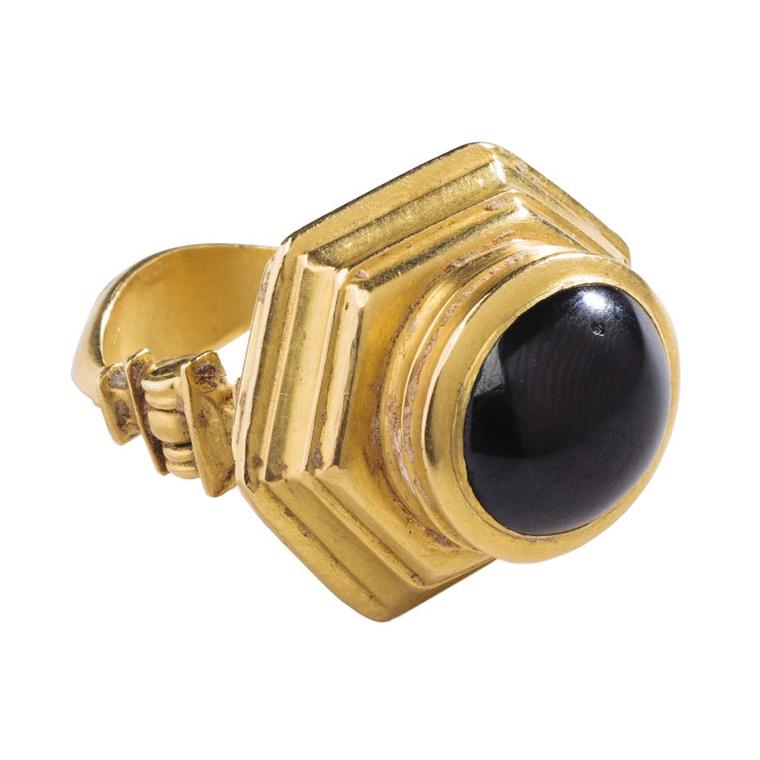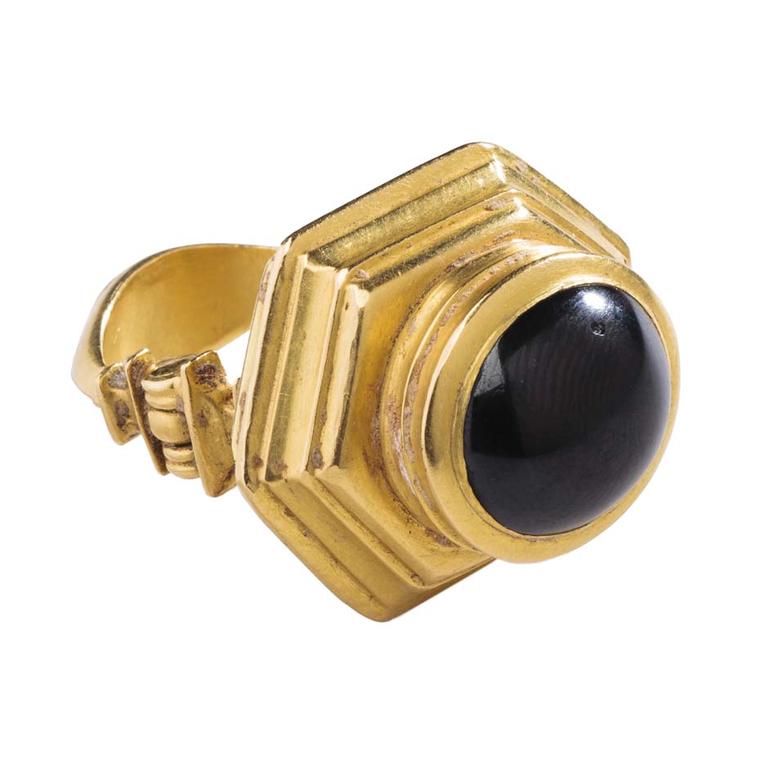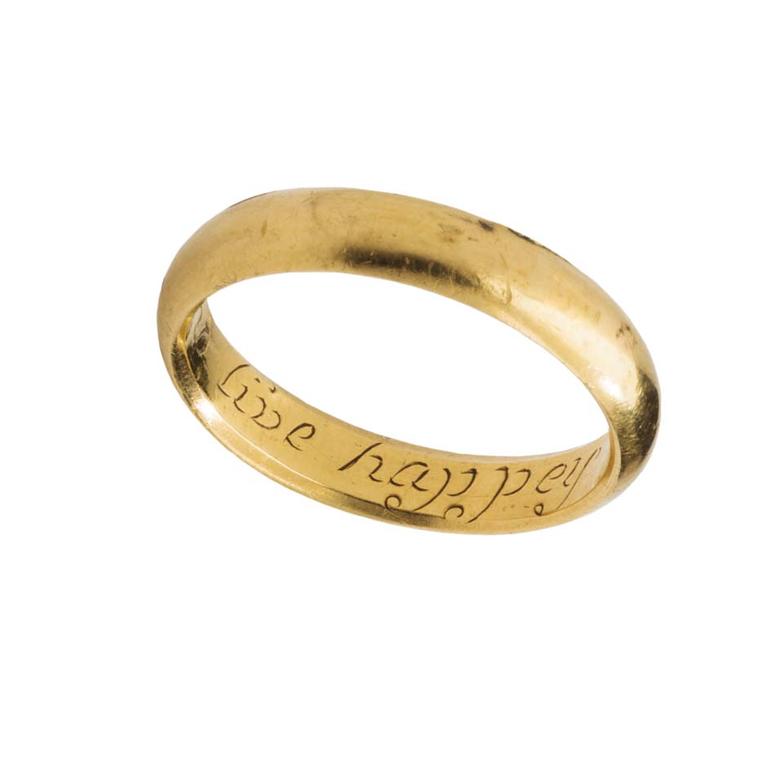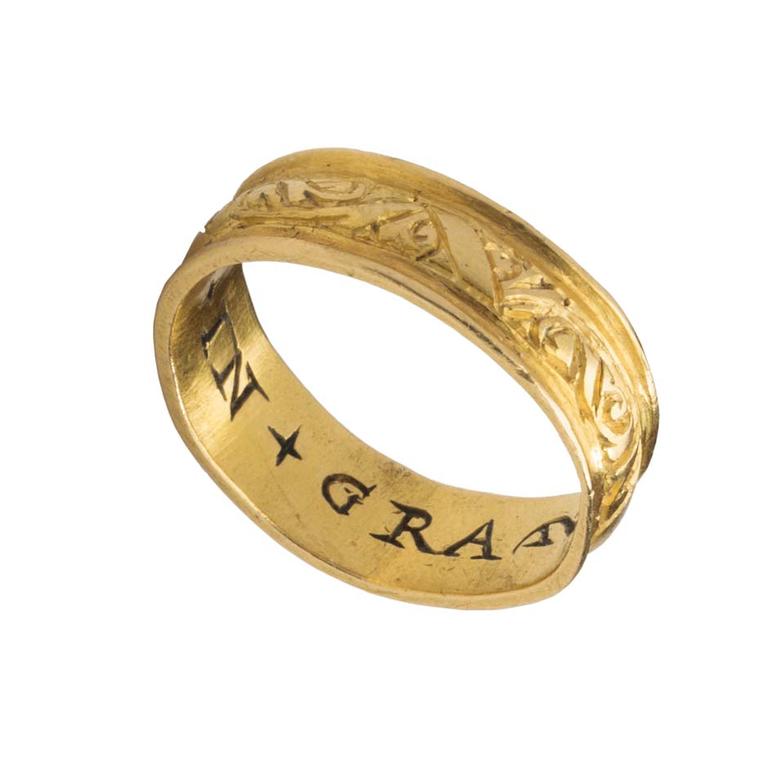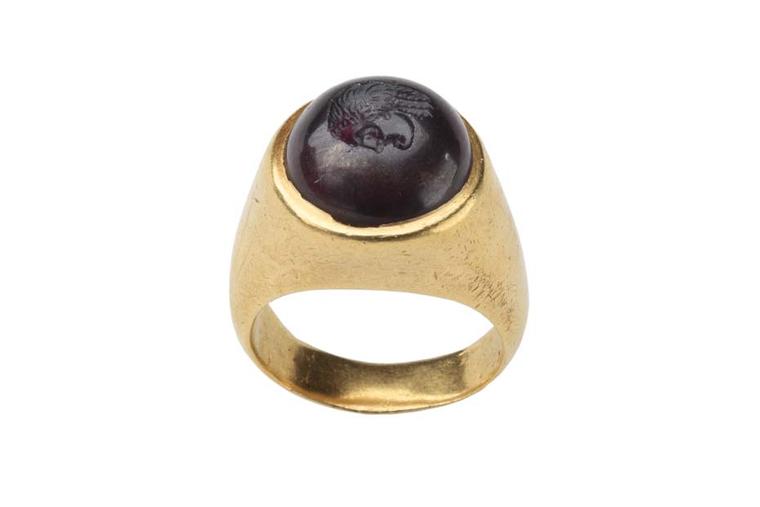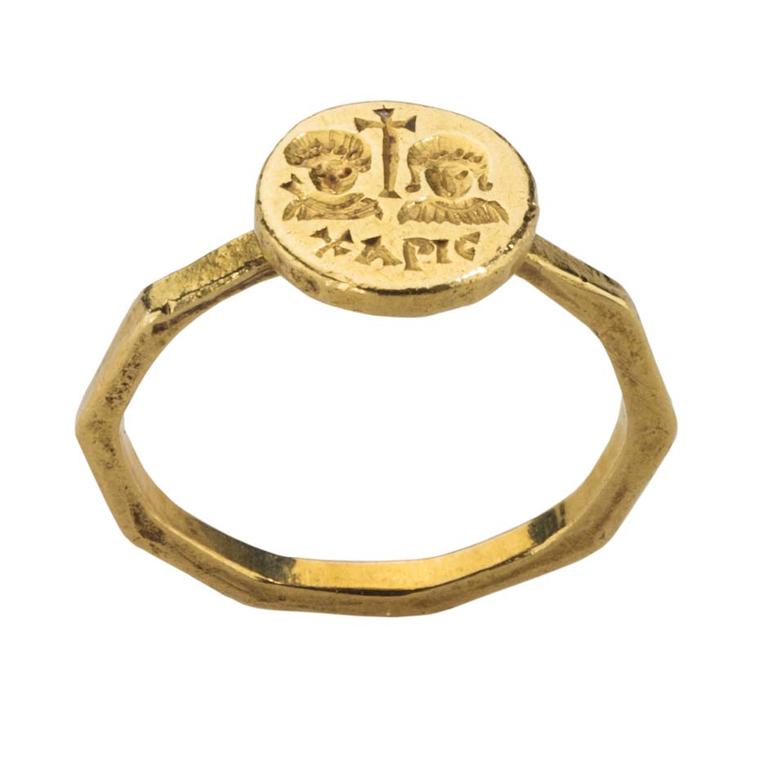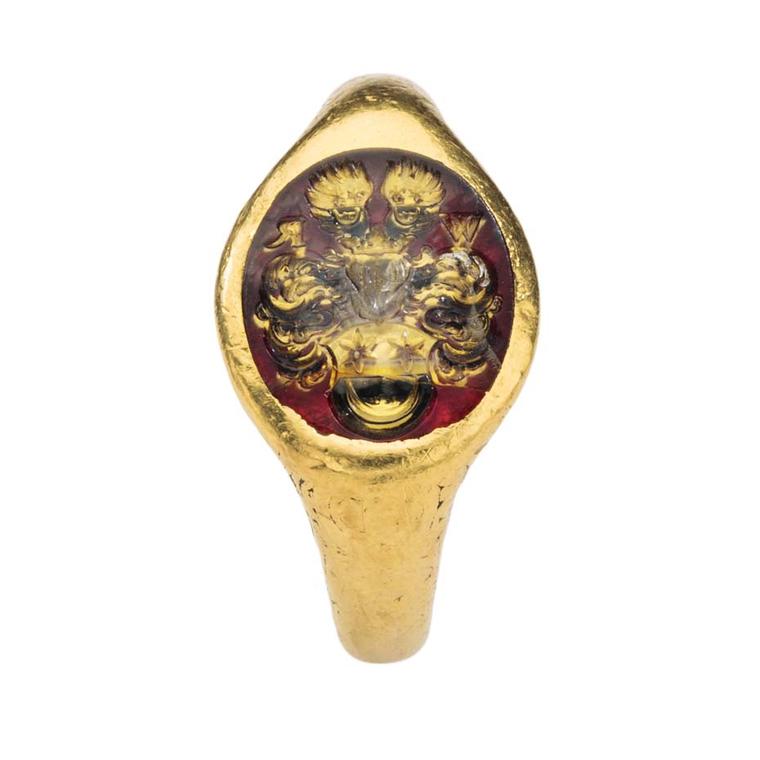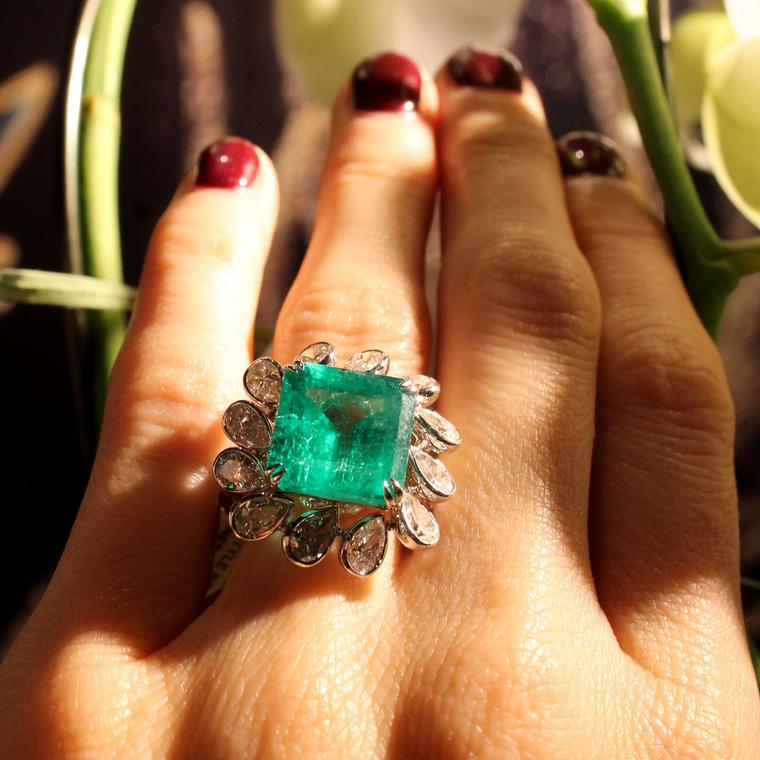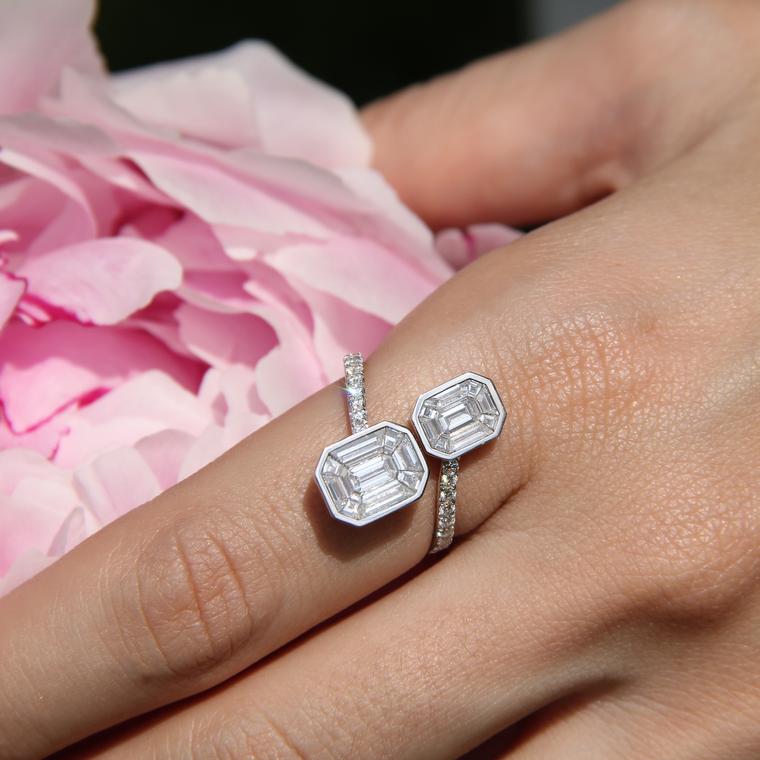by Paula Weideger
Whether you are a window shopper or a collector of antique rings, you are in for a treat. Until the 18 October, an exhibition at The Cloisters in New York, called Treasures and Talismans, is showcasing 53 examples – the best of the little-known private Griffin Collection, so named after the mythical part-eagle, part-lion beast known for guarding treasure and, in this case, also the privacy of the collector, who does not wish to be identified.
The Cloisters is the medieval branch of the Metropolitan Museum of Art, located at the northern tip of Manhattan Island. It has not produced a catalogue for the show but Sandra Hindman, whose gallery Les Enluminures helped form the collection, has produced “Take This Ring”, a book that shines a spotlight on almost all of the antique jewelry in the show.
The Griffin Collection numbers about 250 antique rings. Curator C. Griffith Mann has selected the best of them dating from classical antiquity, the Byzantine Empire, the Middle Ages and the Renaissance and has displayed them together with textiles, goldsmiths’ work, ivory carvings and caskets from the relevant periods. But rings are mainly the thing here.
On view are examples made for high-ranking clergy, signets used to seal documents, elaborately enamelled and jeweled advertisements of prestige and power, as well as simple wedding bands. The latter are posies – gold rings with a message engraved inside. These poetic phrases known only to the wearer and the giver are a specialization of the Griffin Collection, of which nine – mostly from the 17th century – are on display. Phrases include: “A verteuous wife prolongeth life” and “A hart more kind you cannot find”.
The introduction to “Take this Ring” is written by the well-known jewelry historian Diana Scarisbrick. In it, she has produced lively histories of four antique ring collectors: Ernest Guilhou (1844-1911); the Comtesse de Béarn (1870-1936); George Zacos (1911-1983); and Dame Joan Evans (1893-1977). The Griffin Collection includes antique rings that once belonged to each of them.
